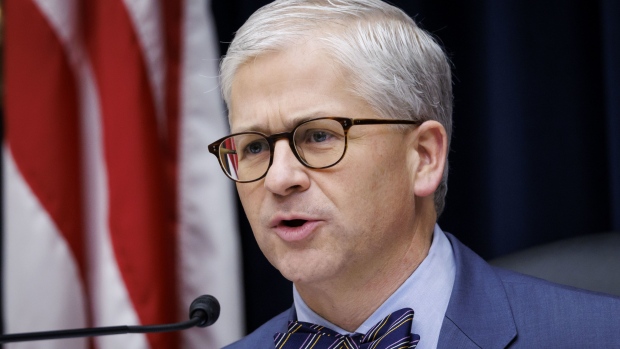Mar 29, 2023
US Regulators Face Tough Questions on SVB, Signature Bank Failures
, Bloomberg News

(Bloomberg) -- The Federal Reserve’s top bank regulator on Wednesday said that supervisors could have done more to keep tabs on Silicon Valley Bank before it collapsed earlier this month.
The acknowledgment from Michael Barr, the vice chair for supervision at the Federal Reserve, was the most direct yet by a government official of possible oversight lapses leading up to the bank’s failures. Barr is leading an internal review of the agency’s oversight of Silicon Valley Bank, which is known as SVB.
“Whenever you have a bank failure like this, bank management clearly failed, supervisors failed, and our regulatory system failed,” Barr said Wednesday during a hearing before the House Financial Services Committee. He added that the Fed is reviewing its supervision and the ways that regulatory structure might have played a role.
SVB was the largest US bank failure in more than a decade, with about $209 billion in assets at the end of last year. Unlike previous banking blow-ups, where banks suffered from deteriorating loan quality, SVB suffered an interest-rate shock in its bond portfolio, which then led to a destabilizing deposit run.
The banking crisis has called into question how the sweeping regulatory reforms that followed the 2007-09 meltdown might have left dangerous gaps in the financial system — either through the ways regulators implemented them or through subsequent legislation that relaxed some of the parameters.
Bloomberg has reported that San Francisco Fed examiners identified warning signs at the California lender more than a year ago, and in recent months raised concern over the firm’s monitoring of risks tied to rising interest rates. Barr told the Senate Banking Committee Tuesday that supervisors issued multiple warnings to SVB and called its failure “a textbook case” of bad bank management.
The Federal Deposit Insurance Corp. took over SVB and Signature Bank as runs at the two lenders worsened earlier this month. During Wednesday’s hearing, FDIC Chairman Martin Gruenberg also signaled that regulators bore some responsibility for SVB’s failure.
Patrick McHenry, a North Carolina Republican who leads the House committee, questioned whether watchdogs should have done more as depositors yanked money from the lenders. He dubbed the exit of funds from the banks a “digital bank run.”
“Was there adequate planning for a large-scale bank run?” McHenry asked in Wednesday’s hearing. Regulators in California, where Silicon Valley Bank was based, have said that investors and depositors tried to pull $42 billion from the bank, which is known as SVB, on March 9.
The speed of the bank runs, particularly at SVB, has also sparked concerns over mobile banking. Last week, Citigroup Inc. Chief Executive Officer Jane Fraser said mobile apps and consumers’ ability to move millions of dollars with a few clicks of a button mark a sea change for how bankers manage and regulators respond to the risk of bank runs.
During Wednesday’s hearing, members of both parties underscored the extraordinary velocity of the SVB bank run compared with past crises, accelerated by social media and precipitated by networks of depositors who sounded alarms about solvency at their chosen bank.
Officials testifying at the hearing also appeared open to the prospect of raising the current $250,000 cap on insuring deposits, but said congressional action would be needed. Treasury Undersecretary Nellie Liang said that she’d support proposals for reform, citing a rise in uninsured deposits in recent years.
--With assistance from Christopher Anstey, Craig Torres, Hannah Levitt and Saleha Mohsin.
(Updates with comments from Liang in final paragraph.)
©2023 Bloomberg L.P.





